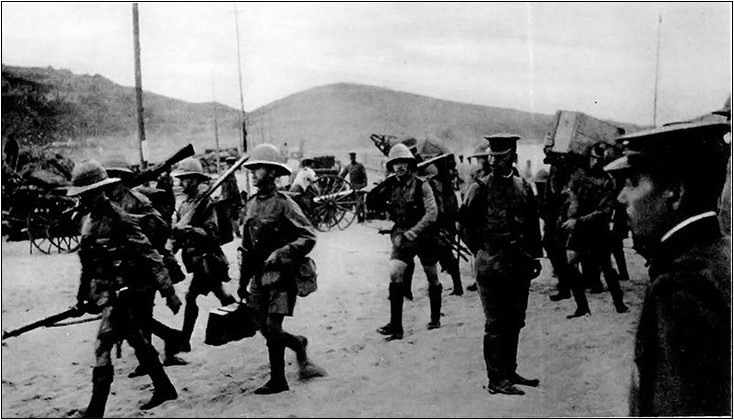By Ian Sewell
This article was published in the August 2015 edition of Soul Search, the Journal of The Sole Society
Japan was still a growing power at the time of the First World War although her defeat of Imperial Russia in the war of 1905 had shown that she had come a long way from the dark days of the Shogun period. Expected to be neutral, Japan nevertheless declared war on Germany on August 23rd, 1914, following a request for assistance from the British. The reason for this was the German colony of Tsingtao, or Qingdoa as it is now known, on the Chinese mainland which was home to a large German cruiser squadron which could prey on allied shipping. The port is now more well known for the Tsingtao brewery which was started whilst in German hands.
The Siege of Tsingtao, and the ensuing battle took place between 31 October and 7 November 1914. The battle for the town was known for many things. The Japanese landed troops on 2 September at Lungkow (now Longkou), Shandong, during one of the worst flash floods in memory which killed thousands of Chinese peasants. The Seaplane Carrier Wakimiya launched the first successful air attack on land and sea targets in September 1914, and Lieutenant Gunther Plüschow was the first person in aviation history to claim an aerial victory when he shot down a Japanese plane with his pistol sidearm. In the final assault a German NCO was rallying his troops with his ceremonial sword when an attacking Japanese officer engaged him with his own Samurai sword, the brief fight could only go one way.

As part of the British contingent the 2nd Battalion South Wales Borders was part of the attack though relations with Japanese were described as ‘tense’ due to a large number of friendly fire incidents as the Japanese could not tell the difference between the Germans and British, though luckily the Japanese marksmanship was often poor.

The Allies took formal possession of the colony on 16 November 1914, but the German garrison had held out for nearly two months despite a total Anglo-Japanese blockade, sustained artillery bombardment and being outnumbered 6 to 1. German prisoners of war were held in Japan where, unlike in the Second World War, they were well treated.
British loses were 13 Army and 3 Navy dead amongst their 83 casualties, one of which was John Roland Sewell who was killed in action 6th November. According to the CWGC his parents were given as Roland & Eliza Ann Sewell, but I have not been able to confirm this. I have found his entry in the 1911 census where he is in the army depot and in 1901 where he is an inmate of the Shaftsbury School in Bisley but prior to that I can find no record of the family. Can anyone else help?
